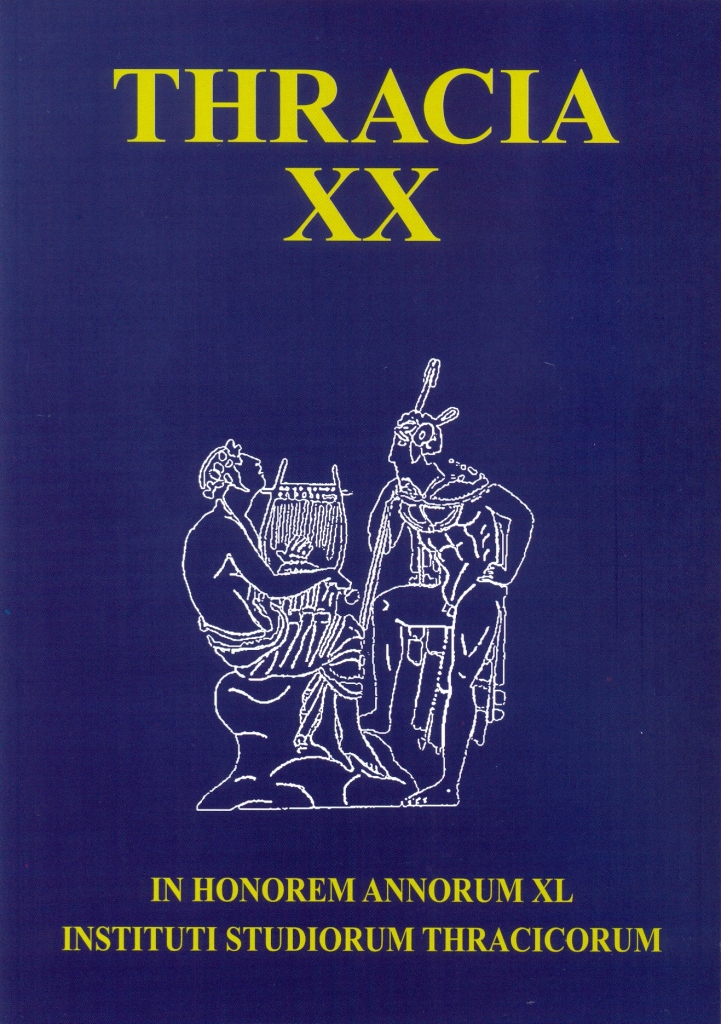Археологическият комплекс Крастава могила при село Драгоданово, Сливенско
The Archaeological Complex of Krastava Tumulus Near the Village of Dragodanovo, Sliven District
Author(s): Diana DimitrovaSubject(s): History, Archaeology, Fine Arts / Performing Arts, Cultural history, Visual Arts, Local History / Microhistory, Ancient World
Published by: Институт за балканистика с Център по тракология - Българска академия на науките
Summary/Abstract: In August 2010 Krastava Tumulus became subject of full archaeological research. A central grave, four ritual platforms and a fire were discovered therein. A person was probably cremated and buried in a one-step pit dug in the south-east part of the tumulus. The grave goods can be split in three groups. The first one covers the personal jewelry of the particular Thracian well-born man/ woman: a gold appliqué with no image, a gold lunula, a massive gold earring and a gold ring with carneol intaglio with the image of a bee. The second group comprises bronze and clay vessels of different sizes and shapes. All vessels refer to the libation and/or washing practices before, during and/or after the performed ritual. Among these vessels there are at least three clay pitchers and three bronze wash basins of different sizes. One of the basins is a tripod and might have been used either as a podanipter (vessel for washing the feet) or a cauldron. The vessel’s legs are shaped as winged sphinxes with four lion’s paws each, staying firmly on a pedestal formed as a large lion’s paw. The main sphinx elements are emphasized by means of silver coating on the bronze. The third group of grave goods consists of different beads, amulets, small-size cult objects, and a silver mirror. These are the so-called ‘Zagreus’ toys’. According to the myth the child Zagreus was playing with those toys, and when he looked into the mirror, he got torn in seven pieces by the Titans. These objects were presumably used in that person’s lifetime for ritual practices such as fortune-telling. Thus they suggest the priest function the deceased used to have in the Thracian society of the Roman Age. One of the beads is scarab-shaped and has a hole to be worn on a string; a scene is engraved on its flat side, representing a right-profiled man’s figure standing before a sacrificial altar and predicting the fortune by stargazing. The priest’s function is once more emphasized by such attributes as scepter and rhomb. The object might have been an amulet, worn either in a leather pouch or on a string. The iconography of the scene is of eastern origin and represents a pattern rooted back in the centuries and millennia like the seal of the Sumerian priest Hashhamer from the late 3rd millennium B.C. or the plate of King Meli-Shih from the Babylonian Kasyt Dynasty in 12th C BC. A two-wick clay lamp, fragments from the casing and decoration of a toilet-ware wooden box, as well as a silver coin of Emperor Trajan dated to 103 or 104 remain outside the above-mentioned three groups. The early 2nd c. is the final date of the burial in Krastava Tumulus. Immediately after the cremation in the center of a flat platform south of it must have taken place certain post-ritual practices as for ex. ritual banquets around a fire enclosed by slab-stones. As a whole, the grave in Krastava Tumulus is dated to the very early 2nd c. and comprises grave goods utilized over a long period of time and handed down from generation to generation. On one hand, the lack of weapons suggests that the buried person may have been a woman and this is supported by the small size of the gold finger ring. On the other hand, a man is depicted on one side of the scarab-shaped amulet. Hence the buried person, having the status of a priest, fortune-teller or magician, might have been of male or female sex. And since there is not enough bone material for anthropological research, it is impossible to specify the sex of the individual, who used to hold the secret knowledge of the ancient Thracians transmitted orally amongst the initiated.
Journal: Thracia
- Issue Year: 2012
- Issue No: 20
- Page Range: 49-71
- Page Count: 23
- Language: English, Bulgarian
- Content File-PDF

